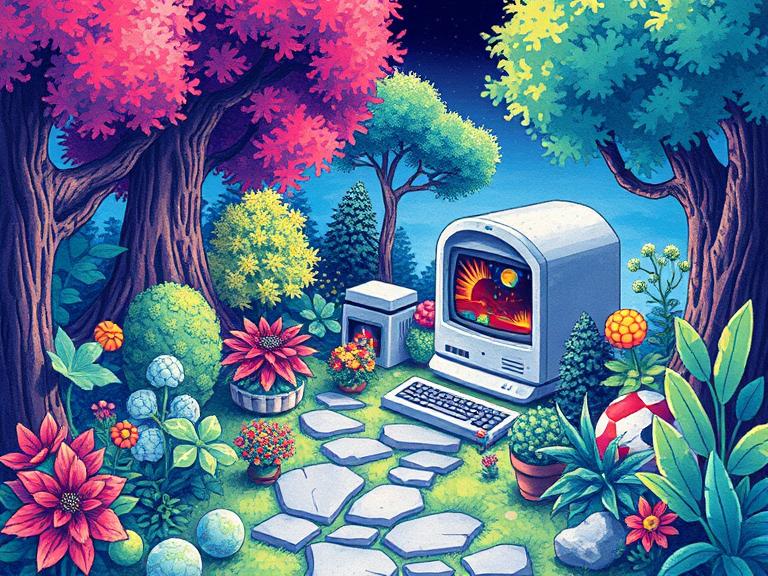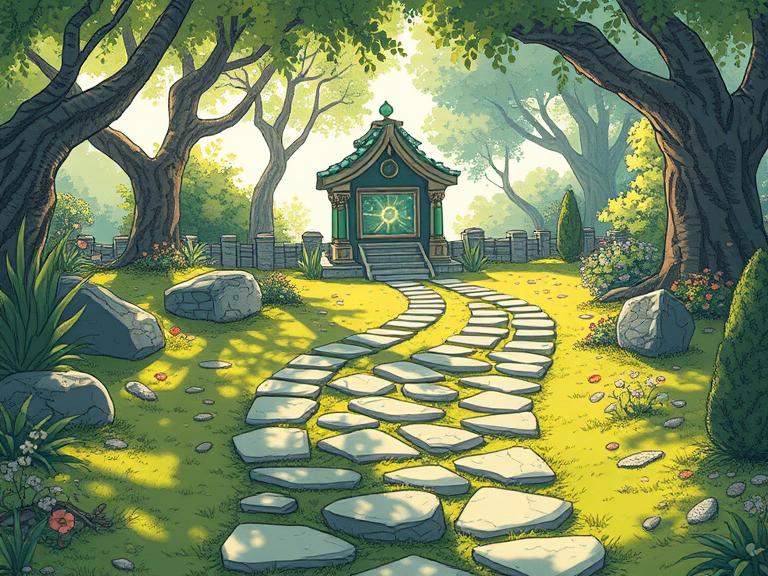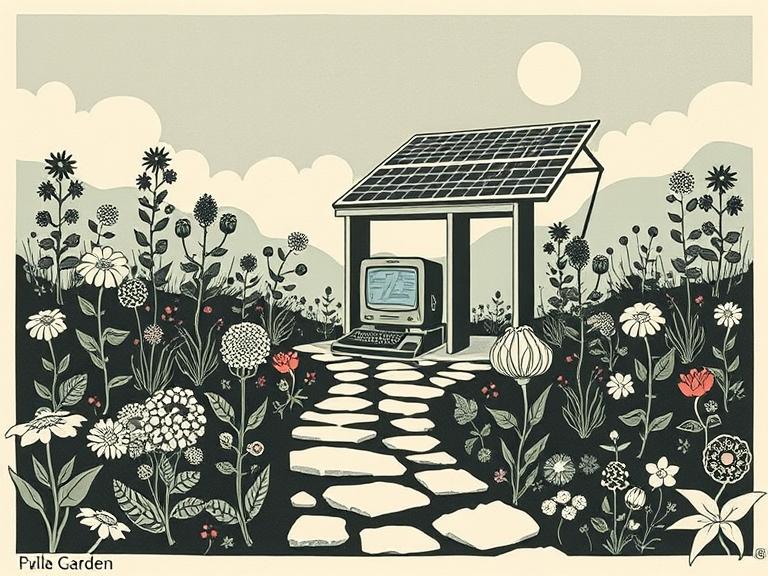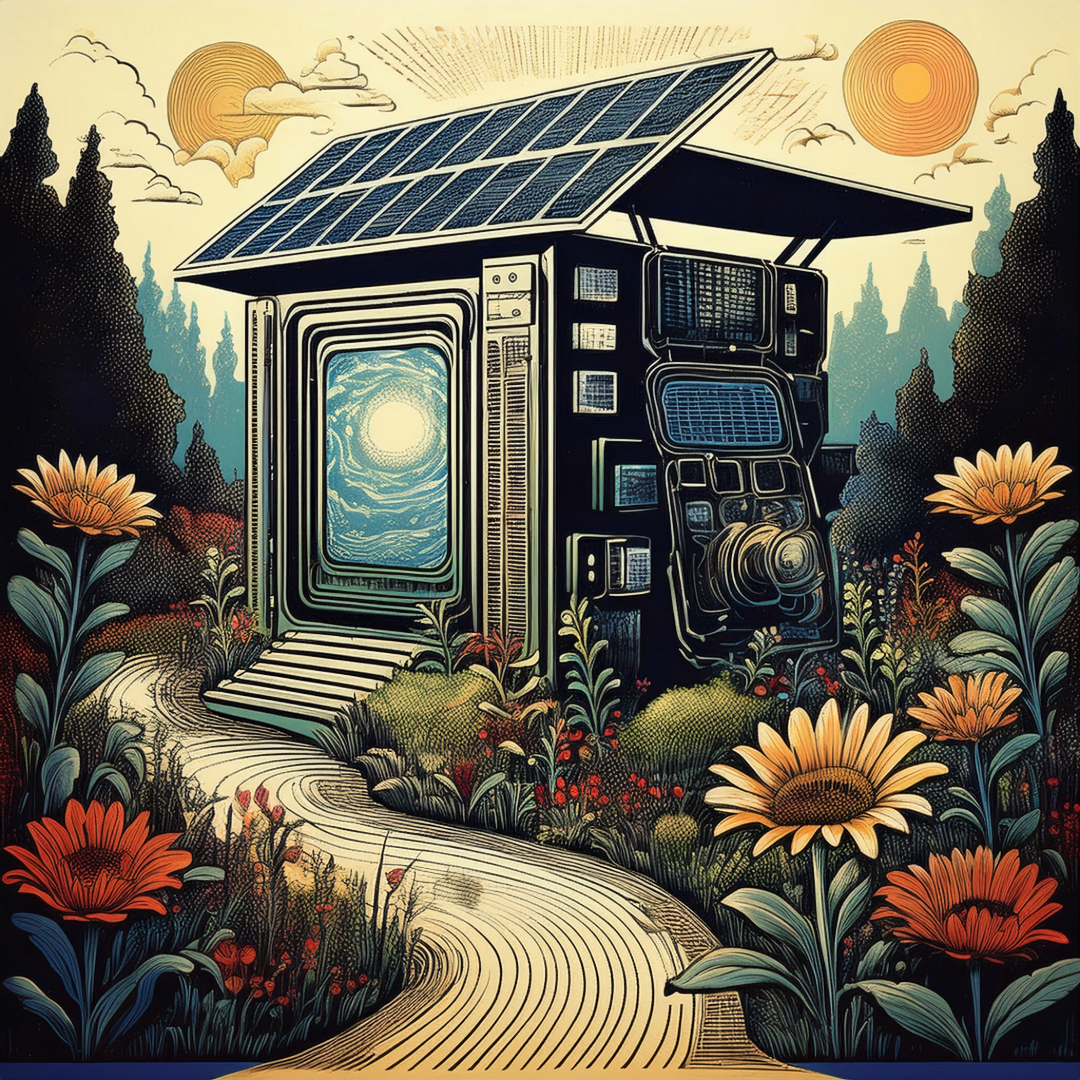Table of Contents
My ongoing exploration of AI image generation includes several experiments that help me understand the capabilities, limitations, and aesthetic tendencies of these systems. This note documents one such experiment: an iterative journey through different AI systems to develop the concept of a computer shrine in a garden setting.
The Evolution of a Digital Shrine

I began with a simple prompt in DeepAI: "Sci-fi Community Computer Garden." The result featured a vibrant, almost psychedelic garden with a vintage computer displaying a cosmic scene. What caught my attention was how the AI had placed the computer at the end of a stone path, giving it an almost shrine-like quality.

Intrigued by this shrine-like interpretation, I refined my prompt to explicitly request "a radiant computer shrine" while adding elements like "moss-covered stones," "dappled sunlight," and "cute anime style." DeepAI responded by generating an image heavily influenced by Studio Ghibli aesthetics, featuring a traditional Japanese shrine at the end of a stone path. While aesthetically pleasing, I found this image to be boring and too derivative.

For my third attempt, I kept the core concept but added more technological elements and specified a different artistic style: "A computer shrine powered by solar panels... whimsical solarpunk garden, linocut." This resulted in a dramatic stylistic shift—a minimalist, graphic illustration reminiscent of linocut prints, featuring a vintage computer beneath a solar panel.
The image includes a generated nonsense label or title and an approximation of a copyright mark. This suggests that the AI is attempting to create a more 'authentic' artifact, but it also points to the likelihood of DeepAI's training data including copyrighted material.

For the final iteration, I fed the third image into Adobe's Text-to-Image generator. The result was a synthesis and evolution—maintaining the core elements (computer, solar panel, garden path) while developing a more sophisticated aesthetic with detailed texturing, retrofuturist styling, and a cosmic portal displayed on the screen. The flowers became more prominent, creating a striking color contrast with the predominantly blue-green scene.
Aesthetic Evolution and Observations
This experiment reveals several interesting aspects of AI image generation:
-
Aesthetic Progression: The images move from fantasy-like saturation to traditional serenity to graphic minimalism to detailed retrofuturism—demonstrating how different systems interpret similar concepts through distinct visual languages.
-
Symbolic Consistency: The stone pathway remains a consistent compositional element across all iterations, though its rendering evolves in the final iteration.
-
Concept Transformation: The representation of technology shifts from literal (vintage computer) to metaphorical (shrine) and back to literal but progressively more abstract and cosmic.
-
Color Evolution: The color palettes vary significantly—from vibrant complementary colors in the first image, to natural greens and yellows in the second, to restrained black and white in the third, to rich blues and oranges with textural depth in the fourth.
Reflections on the Process
For me, this experiment demonstrates how AI image generation can be used in a critical making process, with each output informing subsequent prompts and systems. It reveals both the constraints of these systems (how they interpret and sometimes transform conceptual elements into derivative depictions) and their creative potential when used in an exploratory fashion.
Given the likelihood of DeepAI's training data including copyrighted material, I find myself unlikely to use it for "final" versions of images. I feel more comfortable using Adobe's system, which has been trained on their stock image library, suggesting artists have been at least somewhat compensated for their work.
The next step in this experiment will likely involve using the final generated image as a "prompt" for my own drawing or painting, allowing me to explore the intersection of AI-generated imagery and human creativity. This could lead to a more nuanced understanding of how these systems can inform and inspire traditional artistic practices.
Questions for Further Exploration
System Boundaries and Interpretations
- How do different AI systems prioritize elements in complex prompts?
- When does a system choose to transform a concept rather than represent it literally?
- How do aesthetics from different traditions get encoded in and reproduced by these systems?
Process and Methodology
- What are the advantages of iterative approaches to AI image generation?
- How might using multiple systems in sequence enhance creative possibilities?
- What is lost and gained as images move between systems and prompts?
This exploration connects to my broader investigations of AI aesthetics and solarpunk as pedagogy.